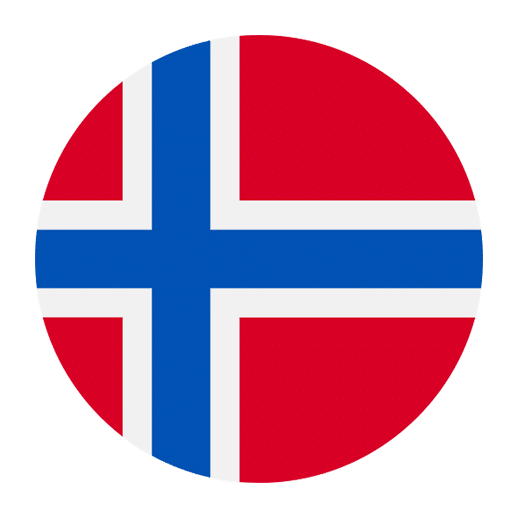Exploring a new language often involves delving into the culture, geography, and natural environment of the regions where the language is spoken. One captivating area of vocabulary that offers insight into the Norwegian way of life is the lexicon related to animals and wildlife. Norway, with its stunning landscapes ranging from fjords to mountains, is home to a diverse array of animals, both domestic and wild. This article will guide you through essential Norwegian vocabulary related to animals and wildlife, providing a solid foundation for any language learner interested in this fascinating aspect of Norwegian culture.
Domestic Animals
Let’s begin with words related to animals you might find on a farm or in a household. These are often the first animals we learn about as children, making them a good starting point for language learners.
– **Cat** – katt
– **Dog** – hund
– **Cow** – ku
– **Horse** – hest
– **Pig** – gris
– **Sheep** – sau
– **Goat** – geit
– **Chicken** – kylling
– **Rabbit** – kanin
These animals are part of everyday life in many parts of Norway. For instance, the **ku** (cow) is vital in rural areas where dairy farming is common. Understanding these terms can help you engage in conversations about daily life and agriculture in Norway.
Wildlife in Norway
Norway is known for its rich and diverse wildlife. The country’s varied landscapes provide habitats for a wide range of species. Below are some of the most notable wild animals you might encounter or hear about.
Large Mammals
– **Moose** – elg
– **Reindeer** – rein
– **Brown bear** – brunbjørn
– **Wolf** – ulv
– **Lynx** – gaupe
The **elg** (moose) is an iconic animal in Norway and is often associated with the country’s wilderness. **Rein** (reindeer) are not only significant for their role in traditional Sami culture but are also a common sight in the northern regions.
Smaller Mammals
– **Fox** – rev
– **Hare** – hare
– **Badger** – grevling
– **Otter** – oter
– **Beaver** – bever
These animals may be less prominent than the large mammals but are equally important to the Norwegian ecosystem. The **rev** (fox) and **grevling** (badger) are particularly noteworthy for their adaptability and presence in various habitats.
Birds
Birdwatching is a popular activity in Norway, thanks to the country’s diverse avian population. Here are some birds you might encounter:
– **Eagle** – ørn
– **Owl** – ugle
– **Seagull** – måke
– **Sparrow** – spurv
– **Crow** – kråke
The **ørn** (eagle) is especially significant, often symbolizing freedom and the majesty of nature. The **måke** (seagull) is commonly found along Norway’s extensive coastline, reflecting the country’s strong maritime culture.
Marine Life
Norway’s extensive coastline and numerous fjords mean that marine life is an essential part of the country’s natural heritage. Here are some common marine animals:
– **Fish** – fisk
– **Whale** – hval
– **Seal** – sel
– **Dolphin** – delfin
– **Crab** – krabbe
Whale watching is a popular tourist activity, particularly in northern Norway, where you might spot a **hval** (whale) or **delfin** (dolphin). The **krabbe** (crab) is also significant, often appearing in Norwegian cuisine.
Insects and Other Small Creatures
Insects and other small creatures might not be as majestic as large mammals or birds, but they play crucial roles in the ecosystem. Here are some you should know:
– **Bee** – bie
– **Butterfly** – sommerfugl
– **Ant** – maur
– **Spider** – edderkopp
– **Worm** – mark
The **bie** (bee) is particularly important for pollination, while the **sommerfugl** (butterfly) adds beauty to Norway’s flora.
Useful Phrases and Sentences
Learning individual words is essential, but understanding how to use them in sentences is equally important. Here are some useful phrases and sentences to help you talk about animals and wildlife in Norwegian:
– “Jeg har en **hund**.” – I have a **dog**.
– “Vi så en **elg** i skogen.” – We saw a **moose** in the forest.
– “Det er mange **måker** ved kysten.” – There are many **seagulls** by the coast.
– “En **ørn** fløy over fjellet.” – An **eagle** flew over the mountain.
– “Jeg liker å se på **sommerfugler** i hagen.” – I like to watch **butterflies** in the garden.
These sentences can help you practice your vocabulary in context, making it easier to remember and use these words in everyday conversation.
Regional Variations
Norway is a country with significant regional variations in dialect and vocabulary. While the words listed above are generally understood across the country, you might encounter some regional differences. For instance, in some dialects, a **cow** might be called a “ku” or “kyr.” Similarly, a **sheep** could be referred to as “sau” or “får.”
Understanding these regional variations can enhance your comprehension and make your language skills more versatile. It also offers a glimpse into the rich linguistic diversity of Norway.
Animals in Norwegian Folklore and Culture
Animals play a significant role in Norwegian folklore and culture. Stories and myths often feature animals as central characters, symbolizing various human traits or natural forces. For example:
– **The White Bear King Valemon**: This fairy tale features a **bear** (bjørn) who is actually a prince under a spell.
– **Nøkken**: A mythical water spirit that can transform into a **horse** (hest) to lure people into the water.
These stories enrich the language and offer cultural context that can make your learning experience more profound and enjoyable.
Practical Tips for Learning
Learning a new language, especially vocabulary related to animals and wildlife, can be both fun and challenging. Here are some practical tips to help you master this aspect of Norwegian:
– **Flashcards**: Create flashcards with the Norwegian word on one side and a picture or the English word on the other. This visual aid can help reinforce your memory.
– **Labeling**: If possible, label objects in your environment with their Norwegian names. For instance, you could label a picture of a **cat** with “katt.”
– **Listening Practice**: Listen to Norwegian nature documentaries or podcasts. This will help you hear the pronunciation and usage of the words in context.
– **Practice with Native Speakers**: If you have the opportunity, practice speaking with native Norwegian speakers. They can provide valuable feedback and help you with pronunciation and usage.
– **Use Apps**: Language learning apps like Duolingo, Memrise, or Anki can be excellent tools for practicing vocabulary and keeping track of your progress.
Conclusion
Exploring the vocabulary related to animals and wildlife in Norwegian opens up a window into the country’s rich natural heritage and cultural traditions. From domestic animals like **cats** (katt) and **dogs** (hund) to majestic wildlife such as the **moose** (elg) and the **eagle** (ørn), this vocabulary is essential for anyone interested in Norway. By learning these words and phrases, you will not only improve your language skills but also gain a deeper appreciation for Norway’s diverse ecosystems and cultural narratives.
Whether you are planning a trip to Norway, engaging in a conversation with Norwegian speakers, or simply expanding your language knowledge, understanding these terms will undoubtedly enrich your experience. So, take the time to learn, practice, and enjoy the fascinating world of Norwegian animals and wildlife.

